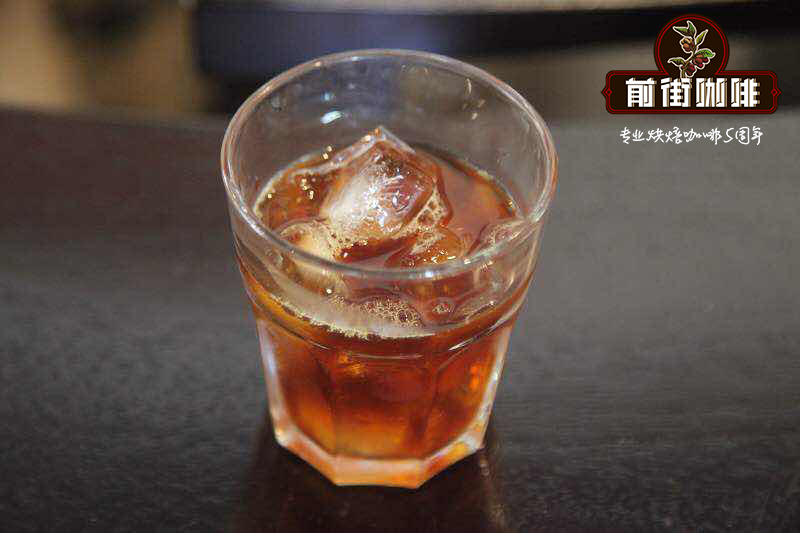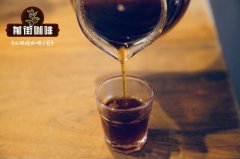What does decaf coffee mean? Starbucks decaf coffee decaf coffee

Professional coffee knowledge exchange more coffee bean information please follow the coffee workshop (Wechat official account cafe_style)
Coffee is a necessary drink for many people every day. it is not only a boost or a wake-up call, but also a kind of life, but many people are unable to touch delicious coffee because they are afraid that caffeine will keep them awake. Is it because you drink the wrong coffee that you are so worried about insomnia or palpitations? Maybe we can find out what decaf coffee is.
[scapegoat-alkaloid is the killer]
You know, "the initiator is alkaloid, not caffeine. Caffeine is not only found in coffee, such as tea, cola and even energy drinks contain high caffeine, but few people have palpitations caused by drinking tea and cola." but cause palpitations when drinking coffee, why?
Caffeine is not the killer, the killer lies in alkaloids. If the coffee fruit is not ripe, it is picked or not really roasted when the coffee beans are roasted, resulting in the residue of alkaloids, and then released into the coffee through the brewing process. We drink, the body in order to eliminate toxins caused by palpitations, palpitations are toxic reactions of the human body, in order to quickly metabolize toxins, it will speed up beating and contracting power.
[decaffeinated coffee]
Decaffeinated coffee is defined as having no more than 0.1% caffeine by weight of raw beans after treatment. The Starbucks standard (also the general international standard) is removed to less than 3% of the original content, which can only be called decaffeinated coffee, not decaffeinated coffee.
Decaffeinated coffee on the market is easy to find on the Internet, and even Starbucks is selling it. Decaffeinated coffee reduces the caffeine through the processing process, thus reducing the flavor of the coffee, so the original intention of drinking coffee is gone.
[treatment of decaffeinated coffee]
Indirect solvent
In this way, coffee beans are soaked in near-boiling water for hours, extracting caffeine and many flavor elements into the water. The water is then separated from the coffee beans and added with methylene chloride or ethyl acetate. The chemical molecules break down the caffeine and evaporate it by heating. The final liquid is then introduced into the coffee beans to reabsorb the coffee oil and aroma. This method is quite popular in Europe, and there are also names such as European law, dichloromethane method, European step and so on.
Direct solvent
This method will steam the coffee beans for about 30 minutes, heat the pores of the coffee beans, and then add solvents to rinse together, usually using dichloromethane or ethyl acetate. Caffeine can be removed after about 10 hours, and then these solvents can be poured out. Re-steam the coffee beans to remove the residue. This method usually uses ethyl acetate, which is also called natural decaffeination or ethyl acetate.
Swiss water treatment method
After the coffee beans are soaked in warm water, caffeine dissolves into the water, filters caffeine with activated carbon utensils, and pours the melting liquid back into the coffee beans. This method does not use chemical solvents, but the coffee loses a lot of flavor in the process of filtration.
Carbon dioxide high pressure extraction
In this way, coffee beans soaked in water are placed in stainless steel buckets, the released carbon dioxide is turned into a liquid under high pressure, caffeine is extracted, and the carbon dioxide liquid is returned to room temperature to return to gas. Because of the cost, this method is usually used on a large number of coffee beans, such as brands that can be found in the supermarket.
[caffeine content of decaffeinated coffee]
Drinking coffee and wanting to consume less caffeine is actually related to the variety of coffee beans, grinding particle size, baking method, brewing method, water temperature, extraction time and so on. In addition, you can also choose specially treated decaffeinated coffee. Before roasting, coffee beans extract caffeine so that it contains less than 3% of the original caffeine. According to EU standards, decaffeinated coffee should contain no more than 0.1% of raw beans by weight.
[recommended brewing parameters of decaffeinated coffee in Qianjie]
V60ap90 ℃ / 1 15 / time two minutes
Important Notice :
前街咖啡 FrontStreet Coffee has moved to new addredd:
FrontStreet Coffee Address: 315,Donghua East Road,GuangZhou
Tel:020 38364473
- Prev

What does SOE coffee mean? what is the difference between the flavor characteristics of mixed coffee and mixed coffee? Recommendation of individual coffee beans suitable for soe
Professional coffee knowledge exchange more coffee bean information please pay attention to the coffee workshop (Wechat official account cafe_style) 1, SOE, in the final analysis, that is, cooked beans are a single raw material consciousness espresso, note, only the title, there is no general description of raw bean roasting information, extraction scheme, so not
- Next

What is decaffeinated coffee? what does decaffeinated coffee mean? decaf coffee contains caffeine.
Professional coffee knowledge exchange more coffee bean information please follow the coffee workshop (Wechat official account cafe_style) [what is decaf] decaf refers to coffee beans before being sent to roast, after special treatment to remove 96% to 98% of the caffeine. The removal of caffeine will cause changes in the physical and chemical nature of coffee beans.
Related
- Beginners will see the "Coffee pull flower" guide!
- What is the difference between ice blog purified milk and ordinary milk coffee?
- Why is the Philippines the largest producer of crops in Liberia?
- For coffee extraction, should the fine powder be retained?
- How does extracted espresso fill pressed powder? How much strength does it take to press the powder?
- How to make jasmine cold extract coffee? Is the jasmine + latte good?
- Will this little toy really make the coffee taste better? How does Lily Drip affect coffee extraction?
- Will the action of slapping the filter cup also affect coffee extraction?
- What's the difference between powder-to-water ratio and powder-to-liquid ratio?
- What is the Ethiopian local species? What does it have to do with Heirloom native species?

